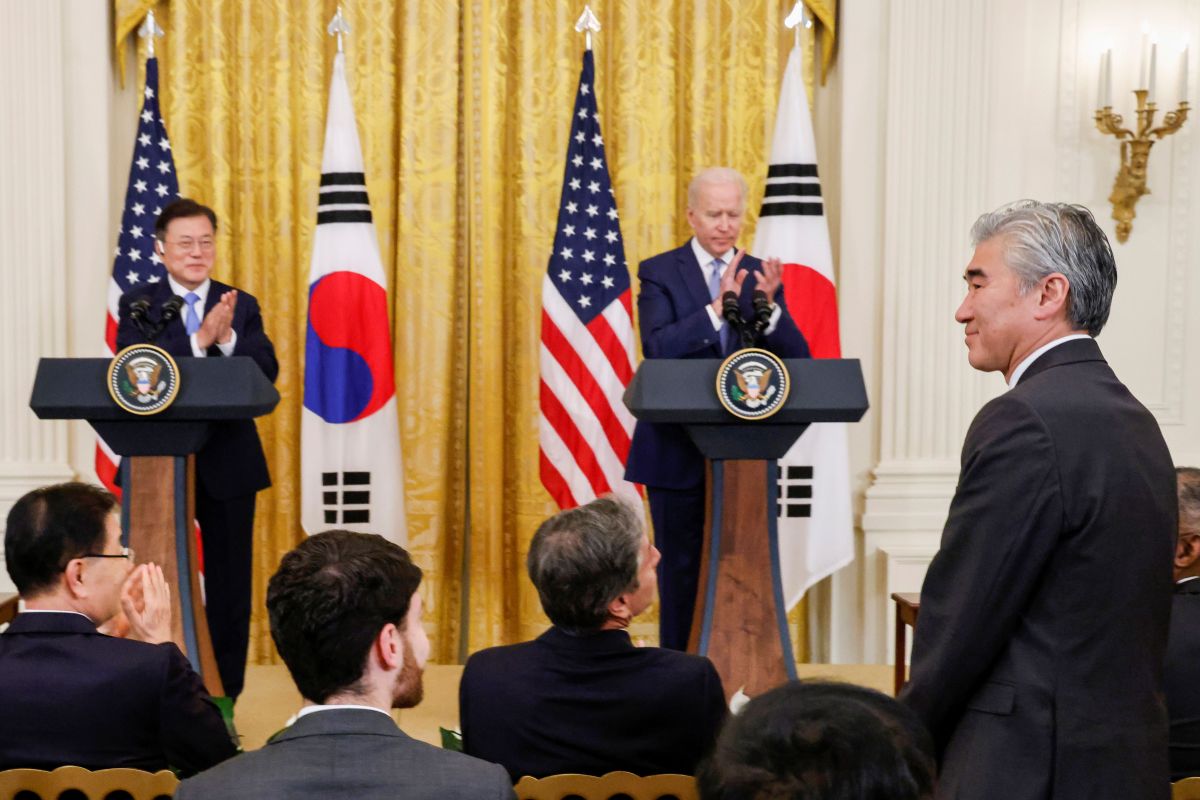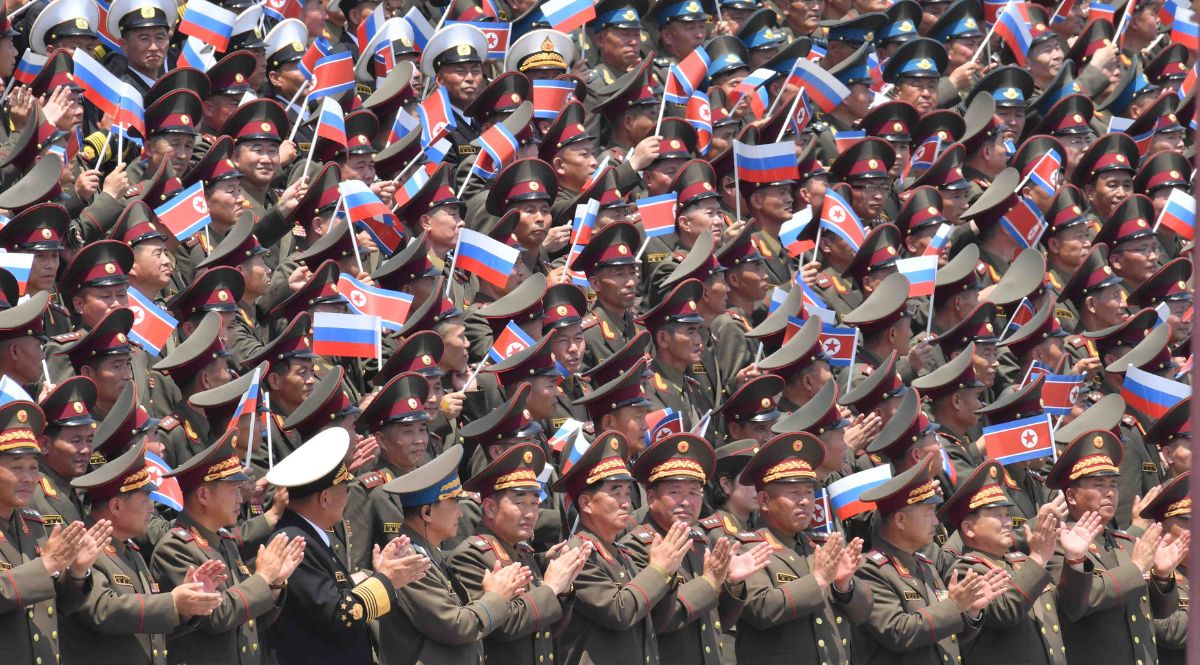What Lies Ahead? Challenges and Unknowns for U.S.-North Korean Relations
North Korea is playing a much less prominent role in the foreign and security policy of Donald Trump’s second administration than it did during his first. While the U.S. may attempt to negotiate with North Korea again, it will be hindered by the continued divergence of interests between the two sides, as evidenced during the 2018-19 Trump-Kim Jong Un talks, as well as the benefits that North Korea gains from cooperating with Russia. However, downplaying the threat from North Korea or reaching a limited agreement with it regarding its strategic arsenal would be detrimental to the U.S. and its allies in East Asia.
.jpg) KEVIN LAMARQUE / Reuters / Forum
KEVIN LAMARQUE / Reuters / Forum
During its first term (2017-2021), the Trump administration identified the Democratic People’s Republic of Korea (DPRK) and its nuclear and missile programmes as one of the greatest threats to U.S. security. Following months of tensions in 2017, an unprecedented meeting took place the following year between Trump and North Korean leader Kim Jong Un in Singapore. However, both this summit and the subsequent meeting in Hanoi in 2019 ended without a breakthrough on the denuclearisation of the Korean Peninsula. By the end of Trump’s term, talks had not resumed, and the DPRK had adopted a more confrontational stance towards the U.S.
The Joe Biden administration (2021-2025) declared its intention to pursue denuclearisation through a combination of pressure and diplomacy. Ultimately, however, it largely confined itself to the former approach, emphasising the implementation of UN sanctions against North Korea and strengthening U.S. cooperation with South Korea and Japan. Although the U.S. indicated a willingness to engage in talks without preconditions, in practice the Americans made it conditional upon North Korea’s willingness to dismantle its nuclear weapons. The U.S. wait-and-see approach prolonged the deadlock in negotiations.
Unclear Approach
So far, the Trump administration has failed to present a coherent vision of policy towards North Korea. On the one hand, Director of National Intelligence Tulsi Gabbard has pointed to the threats posed by the DPRK’s nuclear and missile arsenal and the possibility of it conducting its first nuclear test since 2017. The U.S. identifies the development of an intercontinental-range ballistic missiles (ICBM) capability armed with nuclear warheads as a threat in particular. The U.S. estimates that the DPRK currently has up to 10 such missiles and that number could increase to 50 within a decade. On the other hand, leaks to the press about the Interim National Security Strategic Guidance suggest that deterring China and limiting its influence in the Asia-Pacific is key for the U.S., with the North Korean threat currently playing a secondary role. Under this assumption, the U.S. would urge allies, including South Korea in particular, to take greater responsibility for deterring the DPRK.
At the same time, Trump has vaguely signalled a willingness to resume talks with Kim. The U.S. administration’s focus on other issues (the war in Ukraine, trade policy, China, and the Middle East) suggests that this will not happen in the short term. The subject of negotiations, which previously focused on the nuclear issue, is also unknown. On this issue, the approach of the U.S. government is ambiguous. Statements from the White House and the State Department maintain the goal of denuclearisation of the DPRK rather than the Korean Peninsula, indicating a narrowing of the negotiations to North Korea’s nuclear programme. In turn, Trump, Defence Secretary Pete Hegseth, and Secretary of State Marco Rubio refer to North Korea as a “nuclear state”, which may foreshadow de facto recognition of its nuclear status. Trump also appears to marginalise the importance of Russian-North Korean cooperation, claiming that it is not a topic in his talks with Vladimir Putin.
Possible North Korean Policy towards the U.S.
The resumption of talks is hindered by North Korea’s position on them. Following the breakdown of negotiations in 2019, for which the North holds Trump responsible, the DPRK has aligned itself more closely with authoritarian states in their systemic rivalry with the U.S. and its allies. Since 2022, cooperation with Russia has been particularly important. In exchange for supplying ammunition and armaments, and dispatching troops to fight against Ukraine in the Kursk region, North Korea received political, economic, and food support, as well as probably military technology transfers, from Russia. This serves to implement North Korea’s 2021-2025 armed forces modernisation plan, which includes the quantitative and qualitative development of conventional and nuclear forces. South Korean government-connected think tanks estimate that the total value of benefits that the DPRK has received from its cooperation with Russia to date could be as high as $20 billion.
However, North Korea could agree to talks with the U.S. under certain conditions. First of all, the negotiations would not concern denuclearisation, given that the DPRK has no intention of abandoning its nuclear weapons. It could, however, be interested in talks on arms control and limitation, in which it would halt the development of its nuclear programme in exchange for concessions from the U.S., such as the easing or lifting of sanctions, a reduction in the U.S. military presence in South Korea, and fewer U.S.-Republic of Korea military exercises.
International Factors Affecting U.S.-DPRK Relations
North Korea’s alliance with Russia, and the potential transfer of Russian military technology—including nuclear technology—to the DPRK, strengthens its position in its relations with the U.S. while complicating the Americans’ strategic calculations in the Asia-Pacific region. Russia may also exploit its improved relations with North Korea in negotiations over the war in Ukraine. For instance, Russia could offer to withdraw North Korean troops from the frontline in exchange for U.S. concessions, thereby presenting itself as an intermediary in potential U.S. talks with the DPRK.
An additional complication for the U.S. could be China’s attitude. As the U.S.-China rivalry intensifies, it may deepen its cooperation with the DPRK. As in 2018-19, China may intensify political contacts with North Korea in anticipation of U.S. negotiations with the DPRK. This strengthened North Korea’s position in its negotiations with the U.S. and demonstrated China’s significant influence over the North Korean regime. It also signalled that accumulated disputes in U.S.-China relations would make resolving issues on the Korean Peninsula more difficult.
The new South Korean president, who will be elected in a snap election on 3 June, will also seek to influence relations between the U.S. and North Korea. Regardless of the outcome, the new South Korean leadership will expect the Trump administration to consult them on any potential negotiations with the DPRK. Failure to consider South Korean interests, such as neutralising the threat posed by North Korea’s short-range missiles, could lead to disputes between South Korea and the U.S. At the same time, Japan, which is also threatened by short- and medium-range missiles, may have similar concerns.
Conclusions and Perspectives
North Korea remains an unresolved issue in U.S. foreign policy, with no indication that this will change soon. While the U.S. administration is paying less attention to the DPRK than during Trump’s first term, it continues to pose serious security threats to the U.S. and its allies. These threats stem from North Korea’s development of nuclear and missile capabilities, its cooperation with Russia, and the risk of simultaneous crises in several places in East Asia, including in the Taiwan Strait and the Korean Peninsula.
A quick resumption of Trump’s talks with Kim is unlikely due to other U.S. objectives and North Korea’s focus on gaining more from its alliance with Russia. Even if negotiations were to take place, the divergence between the two sides’ positions would make it difficult to reach a permanent settlement. There is even a risk that the Trump administration may seek a limited agreement, such as stopping the development of North Korea’s long-range missile capability, which threatens only the U.S. and not its allies in East Asia. In order to strengthen its negotiating position, the DPRK will exploit the political, economic, and military support it receives from Russia and China. By conducting missile tests, including of short-range missiles, North Korea can also assess the response of the U.S., including its preparedness to fulfil its alliance commitments to South Korea and Japan.
The Trump administration’s approach to the DPRK may differ from Biden’s policy of emphasising cooperation with allies in response to North Korean threats. This could raise concerns in South Korea and Japan regarding U.S. credibility, compelling them to increase their security contributions in Northeast Asia. Consequently, regional partnerships, such as the U.S.-Japan-South Korea, could weaken. Ultimately, this could also lead to further nuclear proliferation. South Korea, in particular, may seek to acquire the capabilities needed to build nuclear weapons, including the enrichment of fissile material.
If the U.S. and the DPRK were to resume talks, European countries could facilitate additional channels of communication. Poland could play a special role in this, given its diplomatic presence in Pyongyang, alongside Sweden and Bulgaria, and its membership of the Neutral Nations Supervisory Commission, which monitors the terms of the armistice following the Korean War. Poland should emphasise to the U.S. the threats to American interests posed by the DPRK’s cooperation with Russia, including the ongoing war in Ukraine and Russia’s destabilising influence on the situation on the Korean Peninsula.





.png)